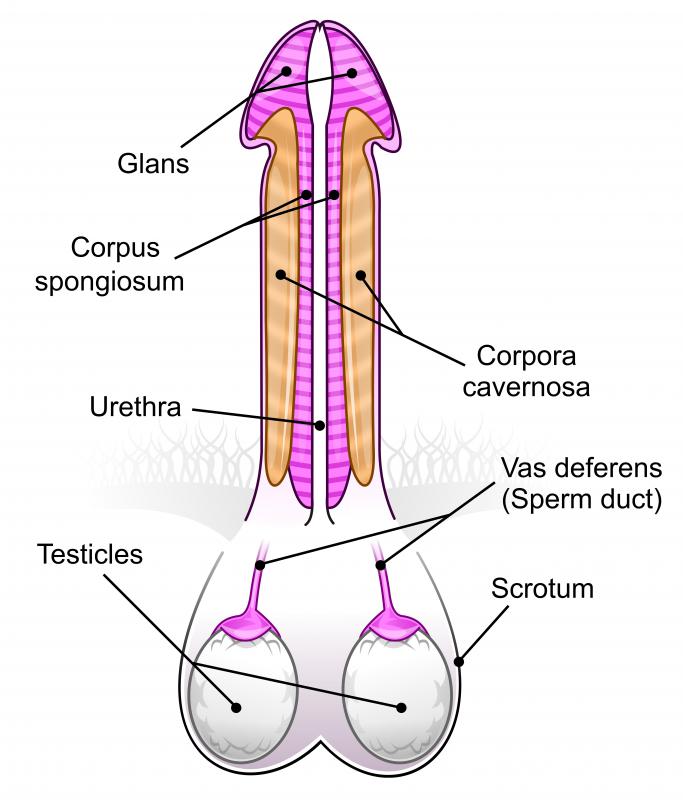At WiseGEEK, we're committed to delivering accurate, trustworthy information. Our expert-authored content is rigorously fact-checked and sourced from credible authorities. Discover how we uphold the highest standards in providing you with reliable knowledge.
What Are Posterior Urethral Valves?
Posterior urethral valves, also called PUV, are a condition that affects only boys and is present at birth. It describes excess flaps of skin in the urethra that can block or reverse the flow of urine from the bladder to the outside of the body. Symptoms of PUV include an enlarged bladder, urinary tract infection, and painful urination. A weak urine stream may also be present and can even lead to respiratory failure in infants. Severe symptoms can be detected in the fetus, while mild symptoms may take years to appear and subsequently lead to diagnosis.
Posterior urethral valves are located inside the male urethra. The male urethra is a thin tube that carries urine from the bladder to the tip of the penis, where it is released from the body. Disorders of the urethra, such as posterior valves, affect the entire urinary tract, which is made up of the urethra, bladder, ureters, and kidneys.

Symptoms of posterior urethral valves are likely to show up at a very early age, as the disorder is present at or before birth. Symptoms vary with each child and may be experienced as mild or severe. The most common symptoms of this disorder are an enlarged bladder that may or may not cause a protruding abdomen. A urinary tract infection, painful urination, and a weak urination stream are also symptoms of PUV. Other symptoms may include difficulty urinating or gaining weight, frequent urination, and bed or pants wetting after the child has been potty trained.

The severity of the symptoms of posterior urethral valves determines when the condition is detected. In very severe cases, such as when the urine is complete or nearly completely blocked, the condition can be diagnosed prenatally. An ultrasound can find bladder distention in the fetus as well as bilateral kidney dilation, ureteral dilation, and decreased amniotic fluid levels. The condition can also be diagnosed in newborns with severe symptoms such as breathing difficulties, distended bladder, and urinary dribbling. When symptoms are mild at birth, the effect on the bladder is very gradual and may take years to present symptoms.

The exact cause of posterior urethral valves is unknown, but it is considered a birth defect. The excess flaps that define PUV are believed to develop very early in fetal development. It is the most common cause of urinary tract obstruction in boys, but affects just about one in 8,000 infants. The general consensus is that this disorder comes about by chance, but it has been seen in some twins and siblings, indicating that genetics may play a part.
AS FEATURED ON:
AS FEATURED ON:
















Discuss this Article
Post your comments